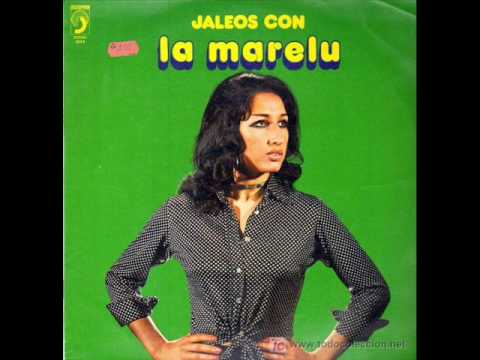Friday has come at last! ¡Olé y olé! And with it my last blog post in this series, ‘Girl Got Duende’. What fun this gig this has been! It is appropriate that we end the week in Spain.
I would not want to be the guy who tells Magdalena Montañéz Salazar, ‘La Marelu’, that he doesn’t love her anymore; even her heartbroken desperation sounds like there might be a dagger hidden in her decolletage. Or maybe I would want to be that guy (or girl), because then, before I died, she would sing to me like she does here.
My first experiences with flamenco were thanks to my musical partner Aaron Gilmartin. A classically-trained musician and composer, Aaron is also a singer-songwriter whose stylistic mastery on the guitar won him a gig teaching bossa nova and flamenco guitar with Happy Traum’s Homespun Music Instruction label. For many years he accompanied dancers in the great Dionisia Garcia‘s classes at the Ballet Hispánico in New York, as well as at regular soirées at La Tapería Madrid on the Upper East Side. I remember sitting in that blue and yellow-tiled bar one night watching Dionisia and her dancers pound the stage, and in the final number she made a beeline to where I was sitting in the shadows and tried to pull me up on stage to join in. Perhaps I needed a couple more glasses of wine, but at that moment there was something about the serious, dark, passion of the flamenco vibe that inspired something akin to terror into my heart. Dionisia, dressed in one of her gorgeous red flamenco dresses, tugged at my arms while I held my ground saying no, no, no, somehow managing to cling to my barstool. In my memory, the incident practically turned into a bar brawl. All these years later, listening to La Marelu and writing this, I wish I had risked my little scrap of pride and gotten up to dance.
Aaron tells me that “Si mi novio no me quiere”, is “a rumba (rumba flamenca, but it’s just called just rumba). It’s related to the tango (flamenco) because both are in 4 and are part of the palos (styles) called ida y vuelta (literally, “round trip”), thus called because they originate in countries outside of Spain. The colombiana, guajira, tango, and rumba are all names of flamenco palos that have influences from other countries, but of course, not all are in 4.” In the vast and complex genealogy of flamenco, the rumba flamenca is a fairly modern phenomenon, born of the contact between flamenqueros and Cuban rumberos at the turn of the twentieth century.
La Marelu herself emerges from the flamenco-rich culture of Extremadura in Western Spain, which shares a long border with Portugal. She reminds me physically of Dionisia. And of Ana Moura. She has that elusive quality we look for in a great singer, that spirit, daring, power and soul—sometimes called duende—which La Marelu has in abundance.
¡Hagan palmas a La Marelu!



0 Comments